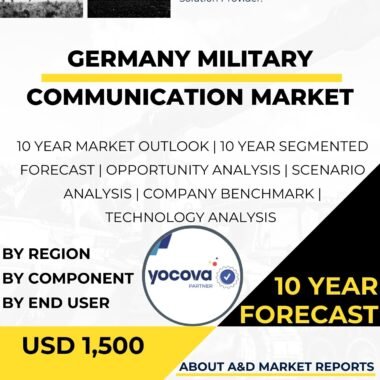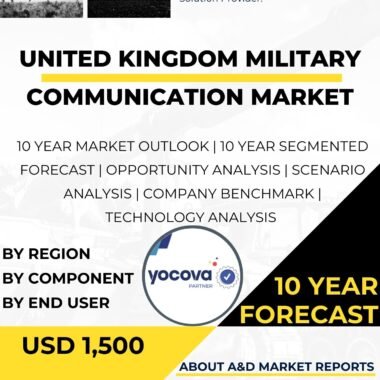Description
Brazil Military Communication Market: Strengthening Defense Through Secure Connectivity
Overview
The Brazil Military Communication Market is a key part of the nation’s defense modernization. It supports secure, real-time communication across all branches of the armed forces — from field units to command centers. These systems ensure reliable information exchange, situational awareness, and smooth command and control during missions.
As Brazil focuses on upgrading its military infrastructure, the market for advanced military communication systems is expanding rapidly. This article explores Brazil’s market landscape, growth drivers, challenges, technological innovations, and future prospects.
Growing Demand for Secure Defense Communication
Brazil’s military communication sector is growing due to the country’s strong commitment to defense modernization. Modern military operations depend on reliable communication networks that allow seamless coordination and quick response to threats.
In recent years, Brazil’s armed forces have invested heavily in cutting-edge technologies to improve connectivity and strengthen command efficiency. These efforts reflect Brazil’s strategy to stay prepared for evolving regional and global security challenges.
Key Market Drivers
1. Interoperability Across Forces
A major factor driving growth is the need for better interoperability among the army, navy, and air force. Integrated systems allow all branches to share mission-critical data instantly. This coordination helps forces act quickly during joint operations and enhances mission success.
2. Indigenous Defense Development
Brazil is also focusing on building its domestic defense industry. By investing in local research, design, and production, the country aims to reduce dependency on foreign suppliers. This move not only supports national self-reliance but also creates new opportunities for Brazilian technology firms and defense startups.
Role of Technology in Modern Warfare
Advancements in information and communication technology (ICT) are transforming modern warfare. Today’s military communication systems go beyond voice transmission. They support data sharing, video conferencing, and encrypted intelligence exchange, allowing decision-makers to respond swiftly and accurately.
In tactical settings, handheld radios and rugged communication devices enable soldiers to stay connected in difficult terrains. For command centers, networked communication platforms provide live updates, helping commanders make informed decisions in real time.
Satellite Communication: Extending Brazil’s Reach
Military communication satellites have become essential to Brazil’s defense strategy. They ensure long-range connectivity for forces deployed in remote or oceanic zones. These systems deliver secure, uninterrupted coverage even in areas without ground-based networks, making them vital to mission continuity.
Challenges Facing the Market
Despite progress, the Brazil Military Communication Market faces several challenges:
-
Complex technology integration: Advanced communication networks require expertise in encryption, cybersecurity, and engineering.
-
System compatibility: Ensuring new technologies integrate smoothly with existing defense systems can be difficult.
-
Regulatory limitations: Export controls and global defense agreements may restrict technology transfers.
-
Skill shortages: A lack of trained personnel in defense communications and cybersecurity remains a barrier to sustainable growth.
To overcome these issues, Brazil continues to invest in education, training programs, and public-private partnerships.
Future Outlook
The future of Brazil’s military communication market looks promising. Continued government investment and collaboration with global defense firms will accelerate innovation. Projects involving technology transfer and joint development are expected to strengthen domestic capabilities.
Moreover, emerging technologies like AI-driven communication networks, cybersecurity advancements, and 5G connectivity will redefine how Brazil’s forces communicate and coordinate in the field.
Conclusion
The Brazil Military Communication Market is at the heart of the nation’s defense transformation. Secure communication systems enhance coordination, improve operational efficiency, and ensure strategic readiness.
As Brazil continues to strengthen its domestic defense ecosystem, the focus on innovation, interoperability, and talent development will shape its future success. With sustained investment and technology collaboration, Brazil is well-positioned to build a resilient, modern, and secure communication infrastructure for its armed forces.




